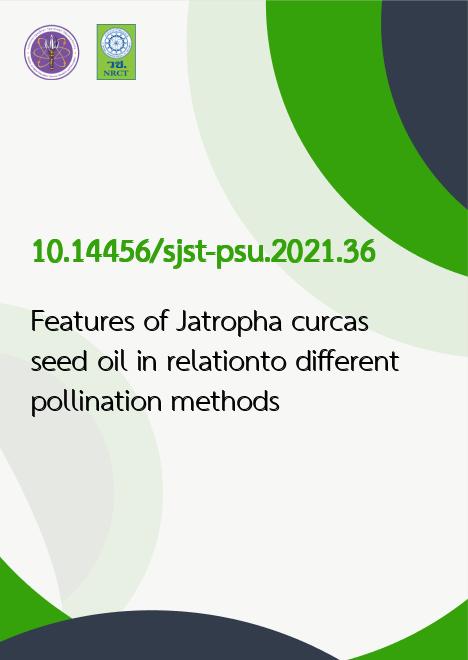
|
Features of Jatropha curcas seed oil in relationto different pollination methods |
|---|---|
| รหัสดีโอไอ | |
| Creator | 1. Nilubol Nuanjunkong 2. Chakrit Tongurai 3. Jason T. C. Tzen 4. Pei-Luen Jiang 5. Upatham Meesawat |
| Title | Features of Jatropha curcas seed oil in relationto different pollination methods |
| Publisher | Research and Development Office, Prince of Songkla University |
| Publication Year | 2564 |
| Journal Title | Songklanakarin Journal of Science and Technology (SJST) |
| Journal Vol. | 43 |
| Journal No. | 1 |
| Page no. | 275-282 |
| Keyword | pollination method, oil content, oleic acid, oil body, Jatropha seed |
| URL Website | https://rdo.psu.ac.th/sjstweb/index.php |
| ISSN | 0125-3395 |
| Abstract | Physic nut (Jatropha curcas L.) is an attractive feedstock for producing standard-satisfied biodiesel. This study aimed tofill a knowledge gap of some aspects on fruit and seed biology of this biodiesel plant, by determining whether or not the pollinationmethod affected seed oil accumulation and the development of fruit, embryo and endosperm as well as lipid storage in embryo andendosperm. For seed oil content, no significant difference was observed among open, cross-, self- and non-pollinated (apomixis)seeds. The maximum fruit and seed set, and the highest content of oleic acid were obtained from open pollination. The fruit diametergrowth was well fit by a single sigmoid shape (R2 = 0.90). The contents of oil and oleic acid were higher in the endosperm than inthe embryo. The oil bodies isolated from both embryo and endosperm tissues mainly contained triacylglycerol (TAG) andintegrated proteins termed caleosins and oleosins. |
